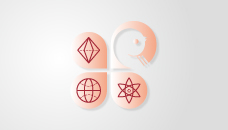Zhen Luo1,2,†, Yufan Xia1,2,†, Shuang Chen1,2, Xingxing Wu2..., Ran Zeng3, Xuan Zhang2, Hongge Pan1,4, Mi Yan1,5, Tingting Shi6,*, Kai Tao3,7, Ben Bin Xu8,** and Yinzhu Jiang1,2,5,***|Show fewer author(s)
Author Affiliations
1School of Materials Science and Engineering, Zhejiang University, Hangzhou 310027, People’s Republic of China2ZJU-Hangzhou Global Scientific and Technological Innovation Center, Zhejiang University, Hangzhou 311215, People’s Republic of China3State Key Laboratory of Fluid Power and Mechatronic Systems, Key Laboratory of Advanced Manufacturing Technology of Zhejiang Province, School of Mechanical Engineering, Zhejiang University, Hangzhou 310027, People’s Republic of China4Institute of Science and Technology for New Energy, Xi’an Technological University, Xi’an 710021, People’s Republic of China5State Key Laboratory of Baiyunobo Rare Earth Resource Researches and Comprehensive Utilization, Baotou Research Institute of Rare Earths, Baotou 014030, People’s Republic of China6Guangdong Provincial Engineering Technology Research Center of Vacuum Coating Technologies and New Energy Materials, Department of Physics, Jinan University, Guangzhou, 510632 Guangdong, People’s Republic of China7Zhejiang-Israel Joint Laboratory of Self-Assembling Functional Materials, Hangzhou, 311200, People’s Republic of China8Mechanical and Construction Engineering, Faculty of Engineering and Environment, Northumbria University, Newcastle upon Tyne NE1 8ST, UKshow less
DOI: 10.1007/s40820-023-01171-w
Cite this Article
Zhen Luo, Yufan Xia, Shuang Chen, Xingxing Wu, Ran Zeng, Xuan Zhang, Hongge Pan, Mi Yan, Tingting Shi, Kai Tao, Ben Bin Xu, Yinzhu Jiang. Synergistic “Anchor-Capture” Enabled by Amino and Carboxyl for Constructing Robust Interface of Zn Anode[J]. Nano-Micro Letters, 2023, 15(1): 205
Copy Citation Text
show less
Abstract
While the rechargeable aqueous zinc-ion batteries (AZIBs) have been recognized as one of the most viable batteries for scale-up application, the instability on Zn anode–electrolyte interface bottleneck the further development dramatically. Herein, we utilize the amino acid glycine (Gly) as an electrolyte additive to stabilize the Zn anode–electrolyte interface. The unique interfacial chemistry is facilitated by the synergistic “anchor-capture” effect of polar groups in Gly molecule, manifested by simultaneously coupling the amino to anchor on the surface of Zn anode and the carboxyl to capture Zn2+ in the local region. As such, this robust anode–electrolyte interface inhibits the disordered migration of Zn2+, and effectively suppresses both side reactions and dendrite growth. The reversibility of Zn anode achieves a significant improvement with an average Coulombic efficiency of 99.22% at 1 mA cm-2 and 0.5 mAh cm-2 over 500 cycles. Even at a high Zn utilization rate (depth of discharge, DODZn) of 68%, a steady cycle life up to 200 h is obtained for ultrathin Zn foils (20 μm). The superior rate capability and long-term cycle stability of Zn–MnO2 full cells further prove the effectiveness of Gly in stabilizing Zn anode. This work sheds light on additive designing from the specific roles of polar groups for AZIBs.




